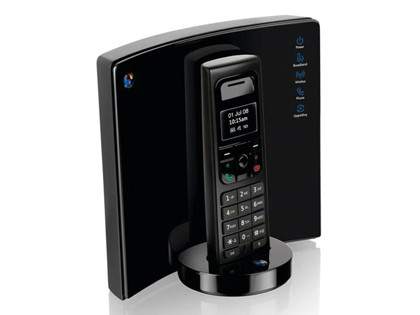Broadband routers such as BT's very popular Home Hub are great for users who just want to plug and go, but you can do more. For example, you may have a more highly specified router already and just want to use BT's hardware as a broadband modem.

If you want to try this, connect one of the Home Hub's Ethernet ports to the main port on your router. Next, disable Wi-Fi on the Home Hub by logging in as admin, navigating to 'Configuration | Wireless', and unticking 'Interface Enabled'.
Turn off DHCP on the Home Hub by going to 'Advanced | Configuration | IP Addresses' and unticking 'Use DHCP Server'. Finally, enable DHCP on your other router and plug the LAN into this.
Add USB storage
It's possible to attach a hard disk or memory stick to one of the Home Hub's USB ports. However, anything more than a memory stick needs to be externally powered. Attach the device to the Home Hub, then right click on My Computer and select 'Map Network Drive'.
Choose a drive letter and enter a URL of \\192.168. 1.253\bt_7g. If you're using version 2.0 of Home Hub, change this to \\BTHUB\Disk_a1. If this fails to map the drive, remove the above and replace it with a URL of \\192.168.1.253\Disk_a1.
Add a printer
Get daily insight, inspiration and deals in your inbox
Sign up for breaking news, reviews, opinion, top tech deals, and more.
The Home Hub also allows you to add a network printer easily, but as there's only one IP address available to the USB ports (192.168.1.253), you'll have to choose between that and any USB storage.
To add a printer, first dig out the driver disk for it and connect the printer to the Home Hub. Back on your Windows computer, start the Add New Printer wizard. Select 'Add a local printer' and untick the option to auto-detect it. Click 'Next' and select the lower radio button to create a new port.
Select 'Standard TCP/IP' from the dropdown list. Now, click 'Next' and the TCP/IP Printer wizard will start up. Click 'Next', then enter the IP address 192.168.1.253 and give it a more meaningful name. Click 'Next' again, select the 'Custom' button and click 'Settings'.
In the resulting window, select the 'LPR' radio button and ensure that you untick 'LPR Byte Counting Enabled'. Finally, enter a Queue Name of LPT1, click 'OK', click 'Next' on the TCP/IP Printer wizard and hit 'Finish'.
On the original Add Printer wizard, either select your printer from the list or insert the printer driver CD and click 'Have Disk'. Click 'Next', enter your printer's name and select whether you want it to be the default. Click 'Next' and select whether you want others on the network to be able to share the printer.
Finally, print a test page to make sure it all works. You can improve the throughput of your broadband router's wireless connection by selecting a different Wi-Fi channel. There are 13 to choose from, but most wireless hubs default to 1. This can cause bandwidth-eating collisions when two neighbouring networks are on the same channel.